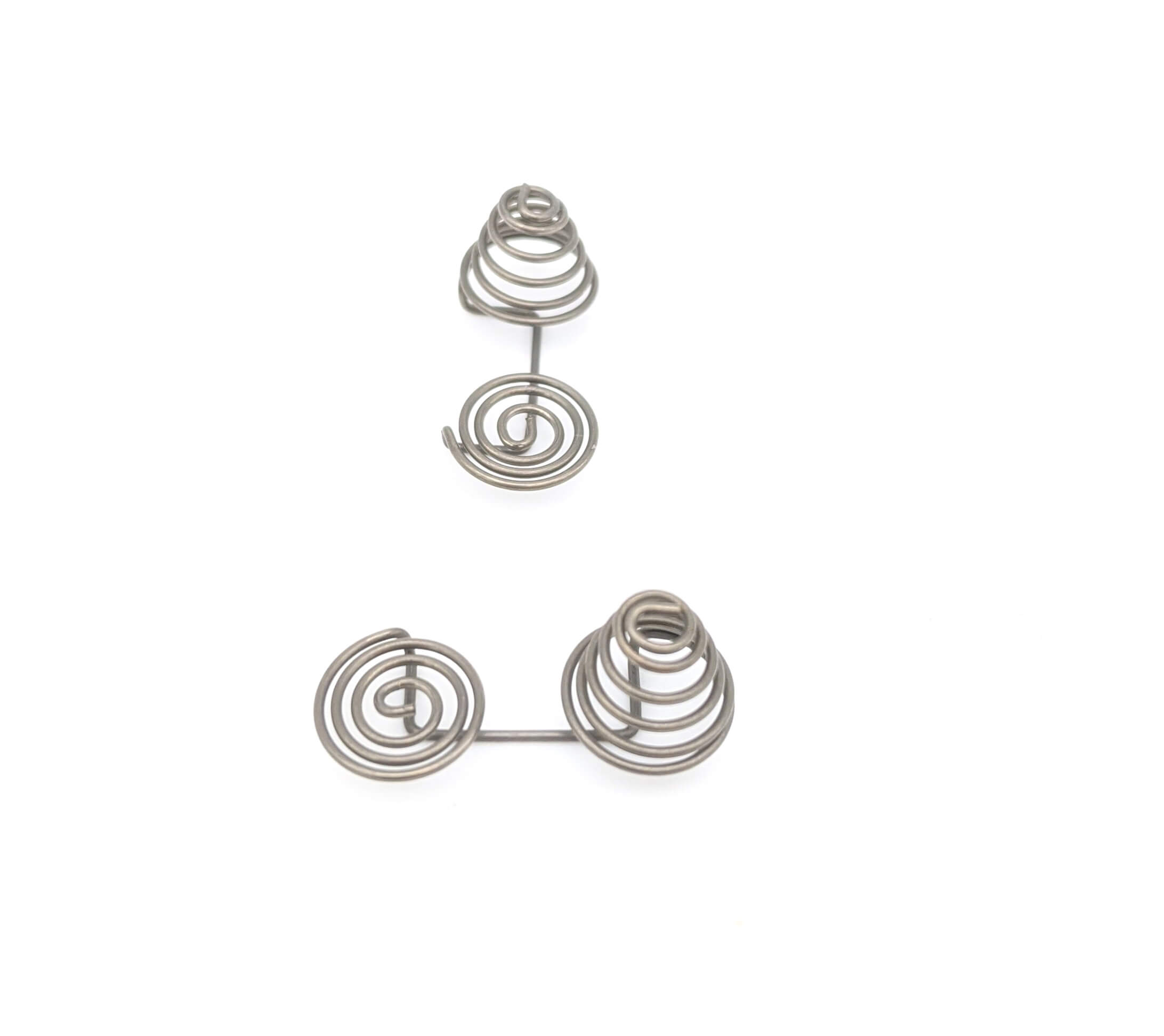Get unique, complex parts easily. No matter your requirements, Chaoyi Spring creates hard-to-produce coil springs and wire forms.
Let us help you create the custom wire form you need, from S-hooks and J-hooks to utility hooks and more.
We work closely with customers across a wide range of industries, helping them design and manufacture made-to-order parts.
Why choose Chaoyi Spring? We prioritize customer-focused collaboration, modern equipment and the latest technology to make your parts per print.
Find the information and guidance you need, from measuring a spring to learning about materials, placing an order and much more.
Working with coil springs, whether on vehicles or other mechanical applications, can be a daunting task. These tightly wound pieces of metal are under immense pressure, posing a serious safety


Working with coil springs, whether on vehicles or other mechanical applications, can be a daunting task. These tightly wound pieces of metal are under immense pressure, posing a serious safety risk if not handled correctly. Fortunately, coil spring compressor tools are designed to safely compress these springs, making maintenance and repair jobs significantly easier and safer. This comprehensive guide will delve into the world of coil spring compressor tools, exploring their types, functionalities, and considerations for choosing the right tool for your needs.

Coil spring compressor tools are essential for any mechanic or DIY enthusiast working on suspension systems. These tools are specifically designed to safely compress coil springs, allowing you to remove and install components like shock absorbers and struts without the risk of the spring suddenly expanding and causing injury.
The key to using a coil spring compressor effectively is understanding the mechanics involved. Coil springs are designed to store energy, which is released as potential energy when the spring is compressed. This compressed energy is what makes coil springs so powerful and dangerous to handle directly.
A coil spring compressor tool essentially acts as a controlled mechanism to manage this stored energy. By applying pressure to the spring, the tool gradually compresses it, allowing you to safely work on the surrounding components. Once you've completed your work, the compressor releases the pressure, allowing the spring to return to its original length.
There are numerous types of coil spring compressor tools available on the market, each with its own strengths and weaknesses. Choosing the right tool depends on the specific application, the size and shape of the spring, and the individual's preferences.
Here's a breakdown of common types of coil spring compressor tools:
Two-arm coil spring compressor tools are one of the most common types. They feature two adjustable arms that clamp onto the spring, applying pressure as the arms are tightened.
Advantages:
Disadvantages:
Three-arm coil spring compressor tools provide additional stability and leverage compared to two-arm models. They have three adjustable arms that distribute pressure evenly across the spring.
Advantages:
Disadvantages:
Hydraulic coil spring compressor tools leverage the power of hydraulics to efficiently compress springs. They feature a hydraulic cylinder that applies controlled pressure to the spring.
Advantages:
Disadvantages:
Spring removal tools are specialized tools designed for safely removing compressed springs. They typically feature a long, slender arm that can be inserted through the spring and engage a hook or claw at the end.
Advantages:
Disadvantages:
Choosing the right coil spring compressor tool is crucial for ensuring safety and efficiency. Here are some factors to consider:
Coil spring compressor tools are powerful tools that must be used with caution. Here are some essential safety considerations:
Proper maintenance and care can prolong the life of your coil spring compressor tool. Here are some essential tips:
While coil spring compressor tools are generally considered the safest and most effective way to handle coil springs, there are some alternative methods that might be used in specific situations.
1. Using a hydraulic press: Hydraulic presses can be used to compress springs, but this method requires specialized equipment and can be dangerous if not performed correctly.
2. Using a jack: In some cases, a jack can be used to compress a spring, but this method is not recommended due to safety concerns.
3. Using a clamp: C-clamps can be used to compress springs in certain applications, but they are generally not suitable for handling large or heavy-duty springs.
Coil spring compressor tools are indispensable for anyone working with coil springs. By understanding the different types, choosing the right tool, and practicing safety precautions, you can safely and efficiently perform maintenance and repair jobs on your vehicle or other mechanical systems.
Remember, working with coil springs demands respect and caution. Always prioritize safety and never hesitate to consult professional guidance if unsure about any procedure. Properly utilizing coil spring compressor tools empowers you to tackle suspension-related tasks confidently, ensuring both a successful outcome and your well-being.
Browse some of the custom wire forms and springs that we manufacture. Don’t see what you need? We specialize in made-to-order products that meet your application requirements.
Visit Our GalleryNeed a custom wire form or coil spring? We make it work. Fill out the contact form and a representative will respond within 1 business day. If you have a PDF or CAD file, you can submit to request a quote.